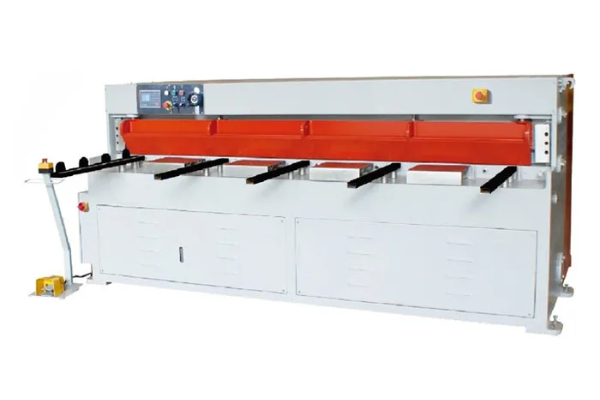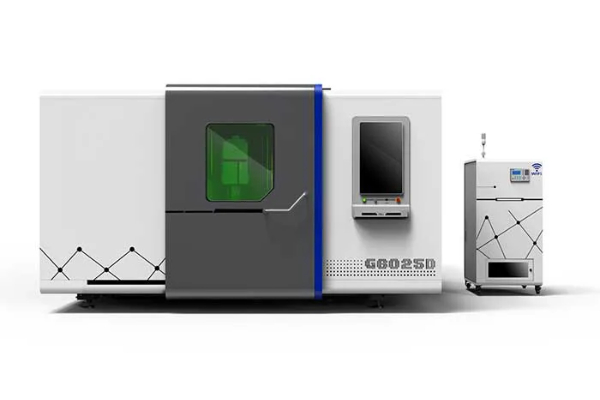
Best Practices for Designing Parts Using an Iron Sheet Folding Machine
- By:Metmac
- 2024-08-06
- 142
In the realm of metal fabrication, iron sheet folding machines play a pivotal role in transforming flat metal sheets into complex and functional parts. To achieve optimal results and ensure the integrity of the finished product, meticulous attention to design principles is paramount. This article delves into the best practices for designing parts using an iron sheet folding machine, encompassing various aspects to guide engineers and designers towards successful outcomes.
Material Selection
The choice of material for the iron sheet is crucial as it dictates the end product’s strength, durability, and formability. Common materials used in sheet folding include mild steel, stainless steel, aluminum, and galvanized steel. Consider the specific requirements and application of the part before selecting the appropriate material. For instance, stainless steel offers excellent corrosion resistance, while aluminum is lightweight and ductile.
Part Geometry and Dimensions
The geometry of the part significantly influences its manufacturability on a folding machine. Avoid sharp corners or excessive bending radii, as they can lead to material tearing or stress concentrations. Ensure that the design allows for adequate bending clearances and bend deductions to account for material deformation during folding. Proper dimensioning is also essential to achieve precise and repeatable part production.
Bend Lines and Radii
The location and orientation of bend lines determine the overall shape and functionality of the part. Plan the bend lines strategically to minimize the number of bends and optimize the material flow. Consider the bend radii in relation to the material thickness and formability. Tighter radii require specialized tooling and may necessitate pre-bending or additional forming operations.
Flange Design
Flanges, or protrusions from the folded sheet, serve various purposes such as mounting or reinforcement. Design flanges with appropriate heights, widths, and bend angles to ensure dimensional accuracy and structural integrity. Avoid excessive flange lengths, as they can lead to buckling or distortion. Consider incorporating radius relief cuts at the ends of flanges to prevent material stretching and tearing during folding.
Assembly Considerations
If the part is intended for assembly with other components, design features such as tabs, slots, and holes should be incorporated into the folding process. Ensure that these features align correctly with mating parts. Tolerancing is crucial for seamless assembly, especially when using precision folding machines. Drafts and chamfers can be added to facilitate assembly and reduce friction.
Inspection and Quality Control
Thorough inspection of parts after folding is essential to verify their dimensional accuracy, surface finish, and overall functionality. Establish quality control procedures that include visual inspection, dimensional measurement, and functional testing. Implement quality assurance measures to prevent non-conforming parts from entering production or assembly.
Conclusion
By adhering to these best practices, engineers and designers can optimize the design of parts for iron sheet folding machines. Careful consideration of material selection, part geometry, bend lines, flange design, and assembly considerations enables the creation of high-quality, functional, and cost-effective parts. Implementing these principles ensures successful part production, reduces manufacturing time, and enhances the overall integrity of the end product.
-
Advanced Sheet Metal Rolling, Cutting, and Folding Machines for Efficient Fabrication
2025/10/22 -
High-Precision Sheet Metal Bending and Cutting Solutions for Modern Manufacturing
2025/10/22 -
High-Precision Solutions from Leading Sheet Metal Cutting Machine Manufacturers
2025/09/11 -
Reliable Sheet Metal Equipment for Sale to Support Precision Fabrication
2025/07/17
-
Advanced Sheet Metal Rolling, Laser Cutting, and Folding Machines for Precision Fabrication
2025/10/31 -
High-Performance Sheet Metal Bending and Cutting Machines for Modern Fabrication
2025/10/31 -
High-Quality Sheet Metal Equipment for Sale: Efficient Solutions for Modern Manufacturing
2025/10/31 -
High-Performance Sheet Metal Equipment for Sale: Forming and Shearing Solutions for Modern Fabrication
2025/10/22
-
Integrating Automation with Rectangular Duct Machines for Enhanced Productivity
2024/05/11 -
Metal Shear Machines- Essential Tools for Precision Metal Cutting
2024/05/11 -
Understanding the Role and Function of Steel Strip Slitting Machines
2024/05/11 -
Maintenance Tips for Longevity of HVAC Duct Machines
2024/05/11
-
A Guide to the Latest Innovations in Sheet Metal Folding Machines
2024/11/29 -
Key Features to Consider When Investing in a Sheet Metal Folding Machine
2024/11/28 -
Enhancing Precision with Advanced Sheet Metal Folding Machines
2024/11/27 -
How to Choose the Right Sheet Metal Folding Machine for Your Workshop
2024/11/26






